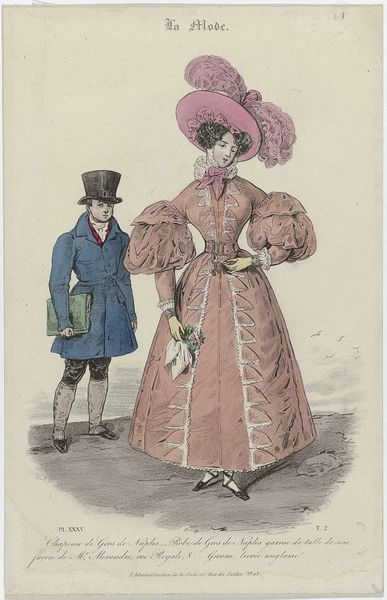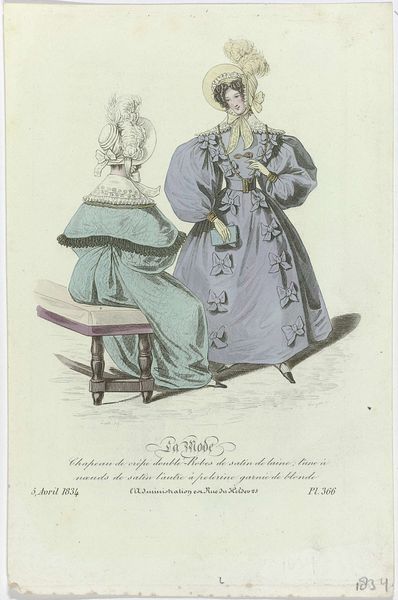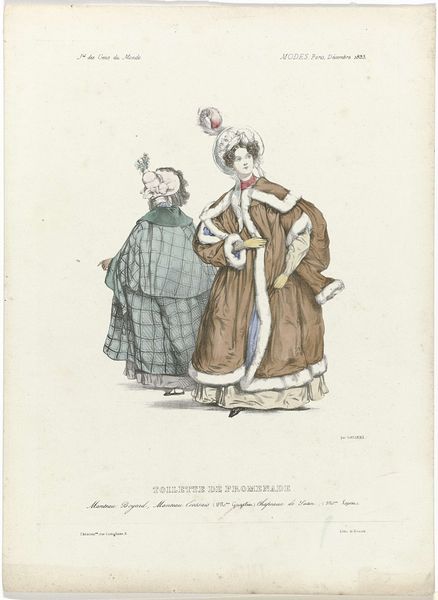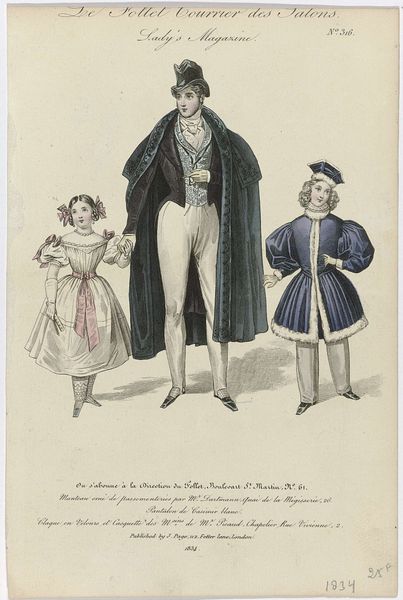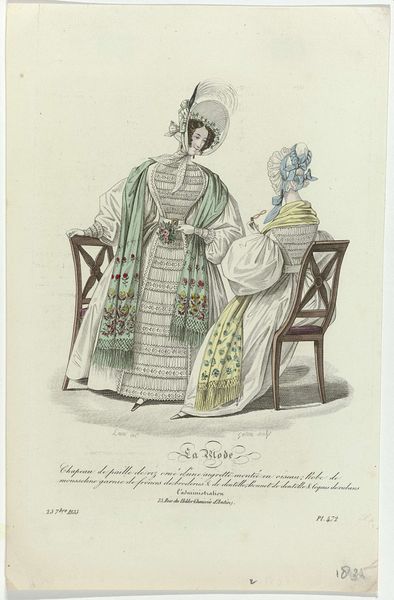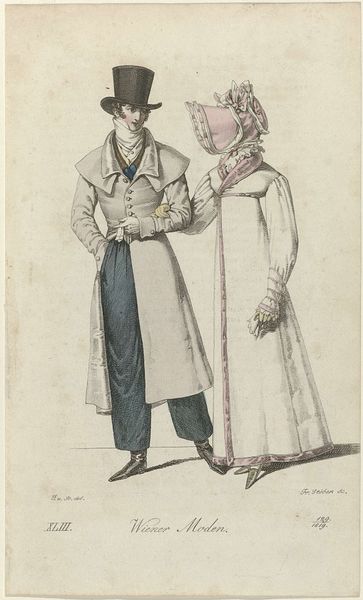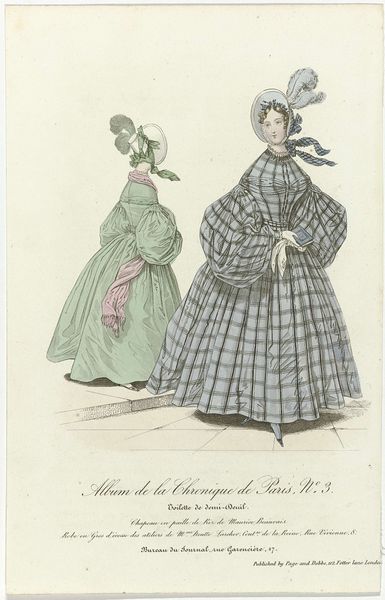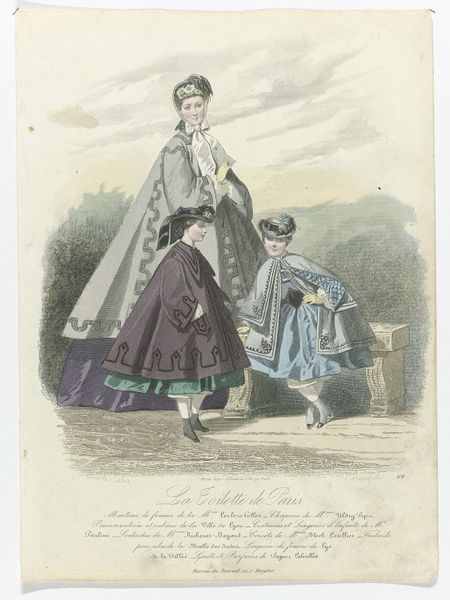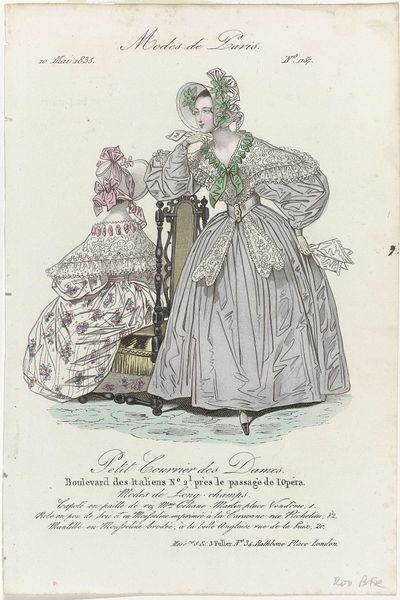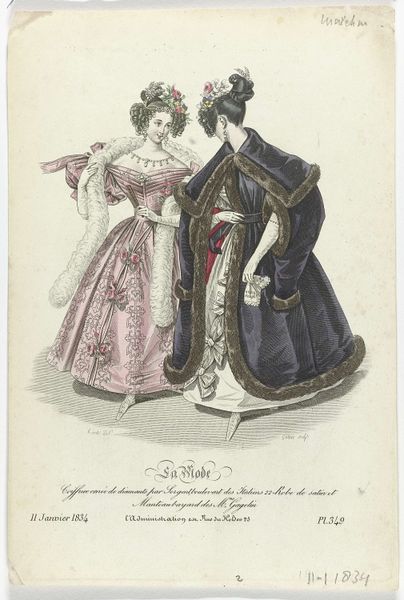
lithograph, print, acrylic-paint
#
portrait
#
lithograph
# print
#
landscape
#
acrylic-paint
#
genre-painting
#
history-painting
#
decorative-art
#
dress
Dimensions: height 227 mm, width 150 mm
Copyright: Rijks Museum: Open Domain
Curator: Looking at "La Mode, 26 avril 1834," a lithograph by Jean-Denis Nargeot, one immediately confronts the elaborate fashion of the time. It presents two figures, elegantly dressed, almost like mannequins displaying the trends. Editor: My eye goes straight to the woman's dress – the puffed sleeves are gigantic, almost cartoonish! It's amazing how much fabric was involved. What can you tell me about the social context around this image? Curator: This piece reflects the prevailing values and aesthetics of 1834. Note the careful attention to detail, each fold of fabric precisely rendered; clothing became a powerful signifier of status and refinement. The woman's dress and feathered hat speak volumes about the era's emphasis on conspicuous consumption and elaborate visual codes. Even the title of the print implies this emphasis, presenting a tableau of "Fashion." Editor: I'm curious about the lithographic process used to create this image. Considering the print's detail and wide circulation at the time, what kind of labor and materials were involved in creating fashion plates like this one? I'm sure the paper alone reflects something about its intended audience. Curator: And the subtle color palette! Do you see how each pastel hue signifies delicate nuances, a celebration of taste and restraint—the epitome of French style and charm? Note also how landscape traditions can be seen through portraiture—we’re provided a window into not just clothing, but a certain historical moment and cultural attitude towards art and the creation of the modern self. Editor: Thinking about that restraint and those stylistic flourishes—this print reminds me how fashion functioned within a capitalist system to dictate seasons of desire, creating both aspiration and obsolescence. How radically different is fast fashion now? I'd love to better understand how materials themselves played a part in this cultural performance. Curator: Seeing these fashions displayed, it makes you think about what continuities, in terms of symbolic codes and power, linger into our present-day understanding and expression. We remain caught within those visual signifiers, but understanding that genealogy can help us begin to deconstruct it. Editor: Definitely, that is something to reflect on. The lifespan of that dress may not have been longer than a season. It definitely raises issues regarding production, distribution and planned obsolescence that are so contemporary.
Comments
No comments
Be the first to comment and join the conversation on the ultimate creative platform.
